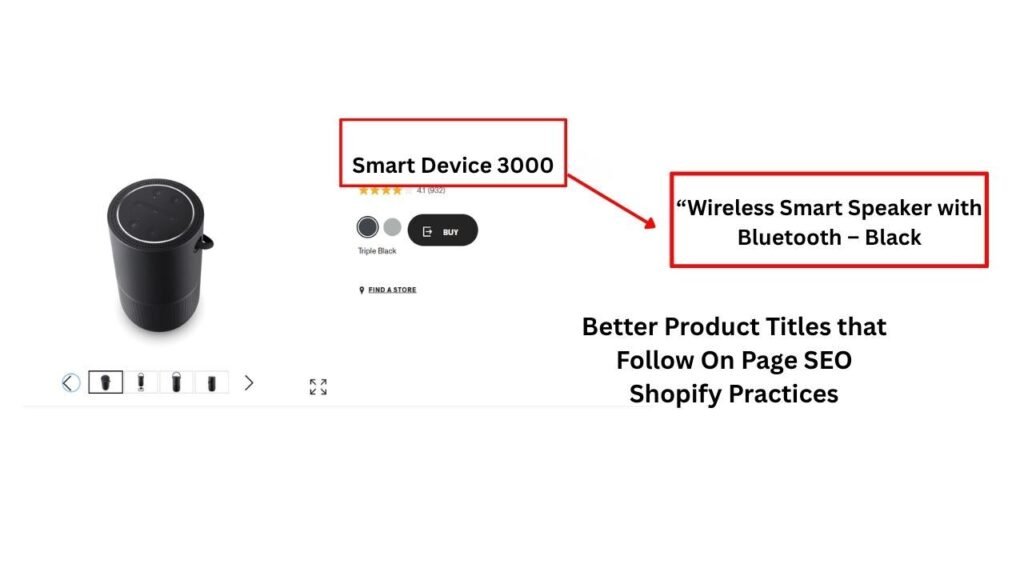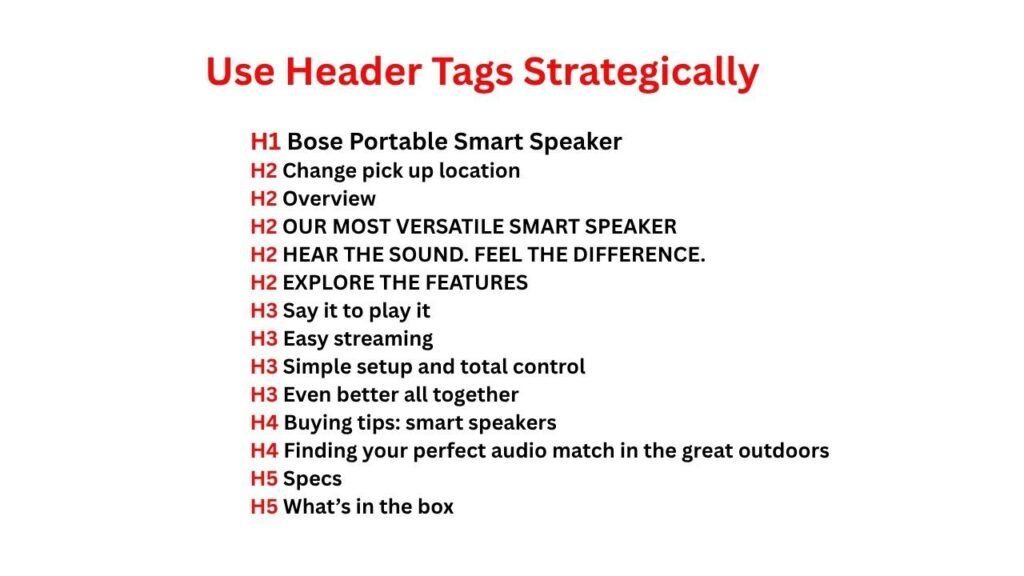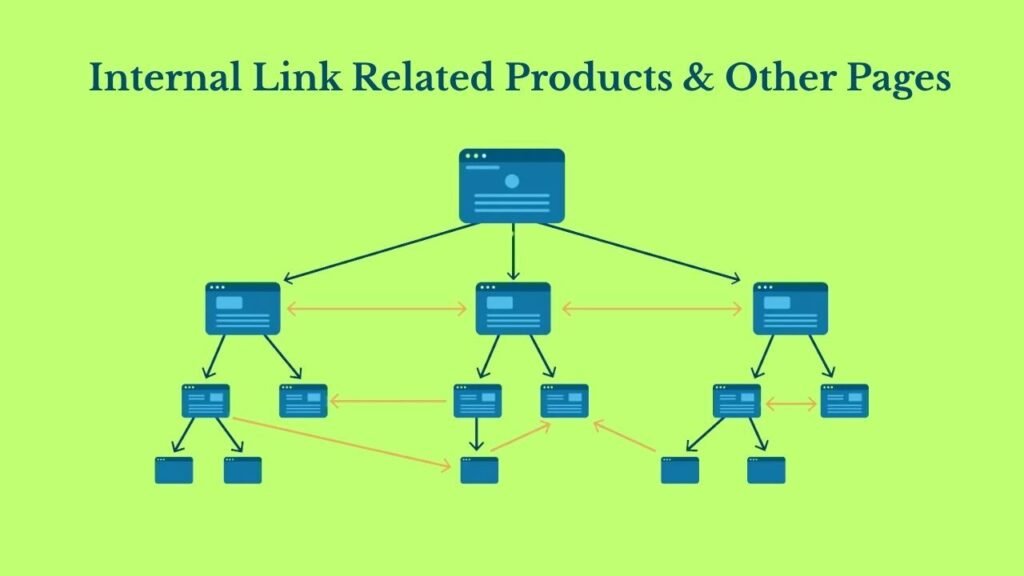When did you last click on the second page of search results to buy something online? Can’t remember, right?
Well… visibility = sales. But if there were no strong on page SEO for an ecommerce website, your store would be like a hidden shop with no signboard. Whatever you are running –
- Shopify
- WooCommerce, or
- Custom site
Optimizing your product and category pages will significantly improve your rankings and revenue. If you are still wondering, “What exactly is an on-page SEO fix?” It is what will help search engines and shoppers find your site quickly and easily.
We are here to break down the 10 best on-page ecommerce SEO fixes that will not only help you to improve your ranking a bit, but also almost double it.
1. Optimize Product Titles for Humans and Google

Your product title is like the intro that tells both search engines and shoppers about the product you are selling in a few words. I suggest you avoid making this common mistake of using generic, vague, or overly technical titles that most ecommerce store owners make. If you continue to do so, it will confuse the user and provide no SEO value.
Examples of Poor Product Titles:
- “Smart Device 3000” – Too vague. What kind of device?’
- “Women’s Top” – Too generic. What type? What color or style?
Better Product Titles that Follow On Page SEO Shopify Practices:
- “Wireless Smart Speaker with Bluetooth – Black”
- “Women’s Cotton V-Neck T-Shirt – White”
This small change improves your page’s click-through rate, gives Google better context, and helps customers immediately know what you’re offering.
2. Write Meta Descriptions That Sell
Yes, of course, meta descriptions don’t directly impact rankings, but they play a crucial role in getting users to click on your link, ditching competitors. If you happen to write a vague or too robotic description, chances are that people will skip right over it.
If you wish to fix the existing ones, consider this simple formula –
- Be clear about what the product is
- Why is the product useful
- What action do you want the shopper to take
Try keeping it between 150–160 characters, and sprinkle in relevant keywords like “cotton t-shirt for men” or “free shipping men’s t-shirt.”
| NOTE: Writing high-converting meta descriptions is featured in almost every technical SEO book — it’s still a core part of advanced technical SEO strategy. |
3. Ditch Duplicate Product Descriptions
I have seen this practice followed most of the time, where people just copy product descriptions from manufacturers or other sites. Google penalizes duplicate content, so if you don’t want to be the one getting affected and see your rankings go down, avoid doing this.
Instead, invest time in crafting original, compelling descriptions that not only describe the item but also highlight benefits and answer potential buyer questions.
| For example: Instead of just saying: 100% cotton t-shirt Say something like: Stay comfortable all day in our 100% breathable cotton tee — perfect for hot weather, gym sessions, or everyday casual wear. |
How to fix it?
- Use a conversational tone
- Address the buyer directly
- Highlight use-cases, materials, fit, care instructions, and unique selling points (USPs)
- Break it down using bullet points for clarity
This is one of the best on page ecommerce SEO fixes because it directly addresses both user experience and search engine ranking.
4. Clean Up Your URLs
I think that a well-structured URL is not the one that is easier to remember, but also tells Google what your page is all about. This one is especially important for on page SEO for ecommerce websites, where product and category pages multiply quickly.
Let me give you an example to better differentiate between a poor URL and an ideal one.
| Poor URL Example:yourstore.com/product?id=12345 SEO-Friendly URL Example:yourstore.com/mens-black-cotton-tshirt |
Fix it by:
- Including your main keyword (e.g., “mens-black-cotton-tshirt”).
- Removing any unnecessary parameters or symbols.
- Keeping it short, clear, and readable for humans.
I know this might look like a small on-page SEO fix. But it is going to help search engines understand your page context, and enhance clickability when people see it in search results.
Remember, clean URLs = better crawlability = higher ranking potential.
5. Use Header Tags Strategically (H1, H2, H3…)

Think of header tags like the chapters and headings in a book. They help organize your page so both people and search engines know what’s important and how everything fits together.
Many online stores don’t use these headers properly on their product and category pages. When that happens, it can confuse Google and make it harder for your page to show up in search results.
How to fix it:
- Use H1 for the main product name/title
- Use H2s for key sections like “Product Description”, “Why Choose This Product?”, “FAQs”, etc
- Use H3s under H2s to break up content further (e.g., “Material”, “Size Info”)
By naturally incorporating relevant keywords into your headers, you can enhance readability while strengthening your ranking across various on-page SEO types.
6. Boost Internal Linking Between Related Products

You must know that Google uses internal links to understand your site architecture and discover new content. Unfortunately, most store owners tend to forget to link products to related ones, or from blogs to product pages.
Fix it with:
- A “You May Also Like” section linking to related products.
- Cross-linking between product categories.
- Linking from blog posts to relevant products (e.g., “Check out our best-selling cotton t-shirts”).
Doing this not only increases time-on-site but also helps spread SEO equity throughout your store.
7. Add ALT Text to Every Image
Images are a huge part of your online store’s appeal — but did you know that without ALT text, search engines basically can’t “see” them? Adding clear, descriptive ALT text tells Google what each image is about.
This small step can make a big difference. Not only does it help your images show up in Google Image searches (hello, extra traffic!), but it also makes your site more accessible for everyone. So, optimizing ALT text isn’t just smart SEO — it’s good for your customers too!
Fix it by:
- Describing the image in 8–12 words.
- Including the target keyword naturally.
- Avoiding keyword stuffing or vague terms like “image123.jpg”.
It’s also a must in any advanced technical SEO strategy.
8. Speed Up Your Product Pages
Let’s be real — no one likes a slow website. If your product pages take too long to load, shoppers won’t wait around… and Google won’t either. In fact, page speed is a confirmed ranking factor, and ignoring it can seriously hurt both your SEO and sales.
Here’s how you can fix it (without needing to be super techy):
- Compress your images so they load fast, without losing that crisp quality.
- Use lazy loading for images that appear further down the page.
- Clean up extra JavaScript and CSS that may be slowing things down.
- Choose a fast Shopify theme, or optimize the one you’re using.
Tools like Google PageSpeed Insights or GTMetrix make it easy to check your speed. And if you’re on Shopify, good news — there are built-in features and apps to help speed things up even more.
Faster pages = happier shoppers + better rankings. Win-win!
9. Use Structured Data (Schema Markup)
If you want your product listings to stand out on Google, with star ratings, prices, and stock info right in the search results — structured data is the way to do it.
Schema markup tells Google what your content actually means, not just what it says. For online stores, this means you can unlock rich snippets that show off things like:
- Product ratings
- Pricing details
- Whether something is in stock
This kind of info grabs attention and can seriously boost your click-through rate.
Here’s how to get started:
- Add Product schema to every product page
- Include extra details using Review, Offer, and Availability markup
- Run your pages through tools like Google’s Rich Results Test to make sure everything is working properly
It’s a small technical step, but one that can make a big difference in how your store performs in search.
10. Focus on Mobile-First On-Page SEO (Especially for Shopify)
Let me put it this way — if your online store isn’t mobile-friendly, you’re leaving money on the table.
Over 65% of eCommerce traffic now comes from mobile devices. And since Google uses mobile-first indexing, it looks at your mobile site first when deciding how to rank you. So, if your store doesn’t load well or is hard to use on a phone, it’s not just traffic you’re losing — it’s actual sales.
Now, if you’re using Shopify, most themes are already responsive, which is great. But “responsive” doesn’t always mean fully optimized. A few small tweaks can go a long way.
Here’s what I always check when optimizing a Shopify store for mobile:
- Use a responsive theme that adapts to different screen sizes
- Make sure the text is large enough to read without pinching or zooming
- Keep your CTAs (like “Add to Cart”) big, bold, and easy to tap
- Simplify your menus so navigation is clean and effortless
- Ditch any pop-ups or banners that block the screen or frustrate users
- Compress your images so they load quickly, even on mobile data
- Always test your site using Google’s Mobile-Friendly Test
Why this matters: If people land on your site and can’t find what they need, can’t tap the right button, or are waiting forever for it to load, they’re gone. And Google notices that bounce. It’s a direct signal that your page isn’t delivering a good experience, which can hurt your rankings.
Quick Shopify Tip: Even if your theme says it’s mobile-responsive, don’t just trust the label. Always preview and test your key pages — like product, cart, and checkout — on actual phones and tablets. You’ll catch things emulators often miss.
Wrapping it Up
SEO for eCommerce doesn’t have to be rocket science — just a few smart tweaks here and there can totally shift the game. From cleaning up your URLs to speeding up your product pages and writing titles that make sense, these small on-page fixes go a long way.
So, take a deep breath, start checking things off this list, and watch your rankings (and sales) climb. You got this!


